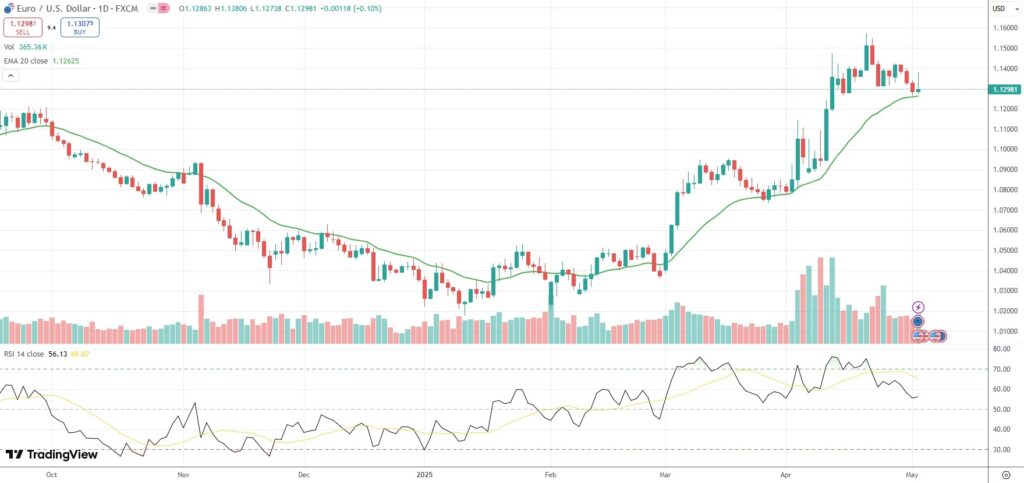EUR/USD settles above 2-week low, posts weekly loss
The EUR/USD currency pair settled above recent low of 1.1265, its weakest level since April 15th, as the US Dollar failed to draw support from the latest solid US employment numbers.According to Monex
The EUR/USD currency pair settled above recent low of 1.1265, its weakest level since April 15th, as the US Dollar failed to draw support from the latest solid US employment numbers.
According to Monex Europe analyst Nick Rees, sentiment rather than hard data was probably driving “much of the doom and gloom narrative” for the greenback.
Employers in all sectors of the US economy, excluding farming, added 177,000 job positions in April, slowing from the revised down 185,000 in March. Still, job growth surpassed market consensus of 130,000.
The latest figure also came relatively close to the average monthly gain of 152,000 over the past 12 months, despite uncertainty in regard to the Trump administration’s aggressive tariff policy.
Average hourly earnings grew 3.8% YoY in April, matching the rate in March.
Yet, the jobs report does not reflect the full impact of the tariffs, which the Trump administration imposed on April 2nd.
“The data for this release was collected during the week following Liberation Day, meaning it would be too soon to expect substantial fallout to emerge just as higher tariffs were being implemented,” Jeff Schulze, head of economic and market strategy at ClearBridge Investments, wrote, cited by Reuters.
“As a result, investors are likely to look through this positive print, viewing it as a ‘calm before the storm’ with strength being downplayed given the known headwinds that the labor market will be facing in the coming months.”
The data cemented expectations that the Federal Reserve will likely keep interest rates on hold next week.
Markets are now pricing in an about 50% chance of a Fed rate cut occurring as early as June, down from 60% prior to the data release.
About 85 basis points of rate cuts by year-end are now priced in, compared to 100 bps previously.
Higher-than-anticipated Eurozone CPI boosts the single currency
Meanwhile, the Euro drew support from stronger-than-expected CPI inflation data out of the Euro Area.
Preliminary data by Eurostat showed that annual consumer price inflation in the Euro Area had remained stable at 2.2% in April, outpacing market consensus of 2.1%. The rate was just above the European Central Bank’s 2% target.
Yet, inflation in services picked up to 3.9% in April from 3.5% in March.
And, the bloc’s annual core inflation rate, which excludes volatile categories such as food and energy, accelerated to 2.7% in April from a three-year low of 2.4% in March. The core rate also exceeded market expectations of 2.5%.
At the same time, the unemployment rate within the bloc has remained at a record low of 6.2% for the sixth straight month in March.
Markets are still pricing in 60 basis points of additional rate cuts by the European Central Bank by the end of the year following the data.
On the tariff front, reports of China reviewing a potential US proposal to initiate discussions over tariffs, introduced some degree of optimism about an easing of the trade tensions between the world’s first two largest economic powerhouses.
The EUR/USD currency pair settled 0.10% higher at 1.1298 on Friday.
The major Forex pair lost 0.56% for the week.

Disclaimer: The views in this article are from the original Creator and do not represent the views or position of Hawk Insight. The content of the article is for reference, communication and learning only, and does not constitute investment advice. If it involves copyright issues, please contact us for deletion.